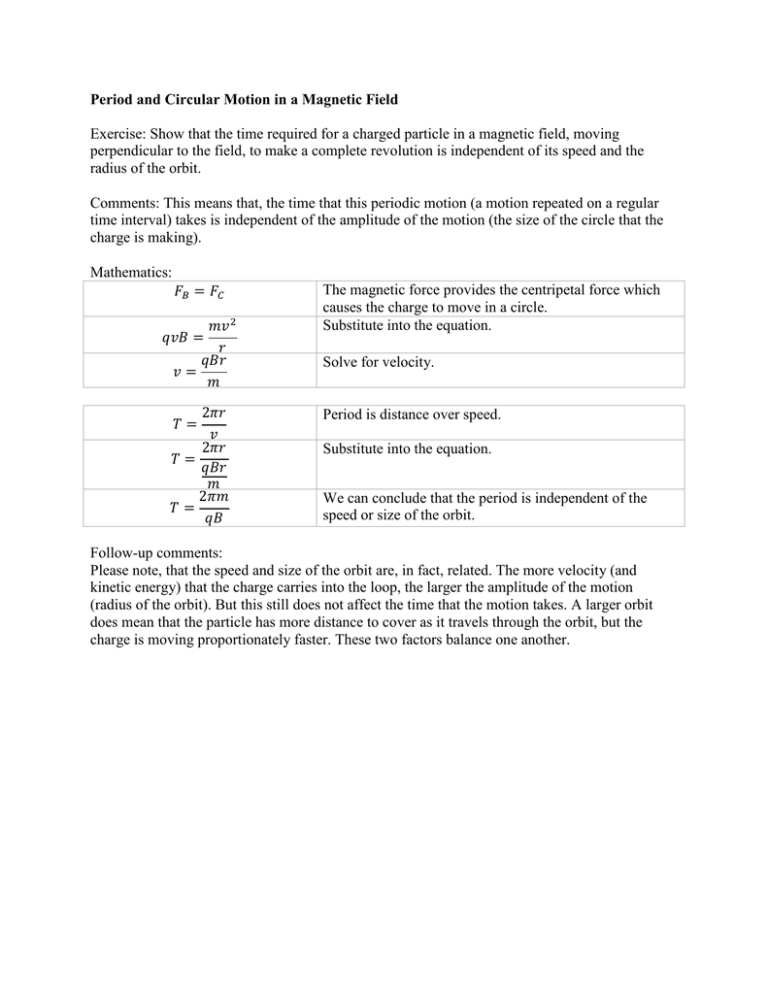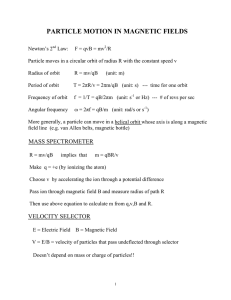Period and Circular Motion in a Magnetic Field Exercise: Show that
advertisement

Period and Circular Motion in a Magnetic Field Exercise: Show that the time required for a charged particle in a magnetic field, moving perpendicular to the field, to make a complete revolution is independent of its speed and the radius of the orbit. Comments: This means that, the time that this periodic motion (a motion repeated on a regular time interval) takes is independent of the amplitude of the motion (the size of the circle that the charge is making). Mathematics: ܨ = ܨ ݉ ݒଶ = ܤݒݍ ݎ ݎܤݍ =ݒ ݉ 2ߨݎ ݒ 2ߨݎ ܶ= ݎܤݍ ݉ 2ߨ݉ ܶ= ܤݍ ܶ= The magnetic force provides the centripetal force which causes the charge to move in a circle. Substitute into the equation. Solve for velocity. Period is distance over speed. Substitute into the equation. We can conclude that the period is independent of the speed or size of the orbit. Follow-up comments: Please note, that the speed and size of the orbit are, in fact, related. The more velocity (and kinetic energy) that the charge carries into the loop, the larger the amplitude of the motion (radius of the orbit). But this still does not affect the time that the motion takes. A larger orbit does mean that the particle has more distance to cover as it travels through the orbit, but the charge is moving proportionately faster. These two factors balance one another.


